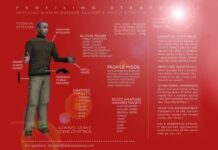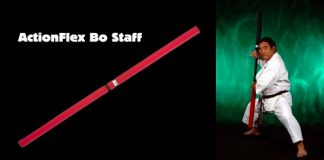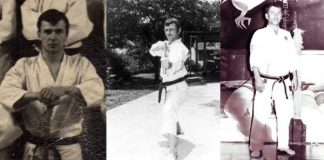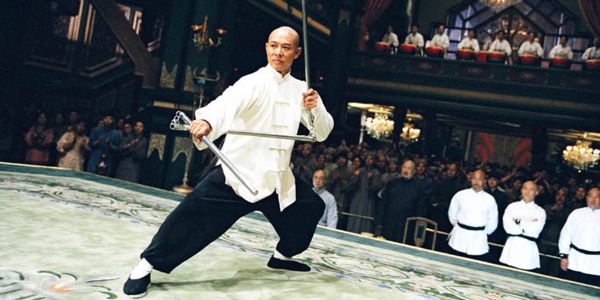 To explaining the origin of the nunchaku, we must look at different historical paths including ancient history and old stories and tales. With the help of history and legend, we can learn about the development of nunchaku as weapons.
To explaining the origin of the nunchaku, we must look at different historical paths including ancient history and old stories and tales. With the help of history and legend, we can learn about the development of nunchaku as weapons.
The flail was an agricultural tool which was made out of two connected sticks shaped like a wheat, rice or soy flail, and it was used in different parts of the world, such as Gallia, Russia, China, Korea, Japan, India etc.
Today we can say with the utmost certainty that China is the country where a specific kind of flail (two connected sticks) originated. There, it was used as a tool, and also as a weapon. It is still in use in martial arts today under the well known name, nunchaku. A number of facts dating from different historical periods verify this thesis. By exploring various old legends, we will learn more information about China and the nunchaku.
Legend says that the first emperor of the Chinese Sung dynasty, Jiu Hong Jun, lost a battle to a Mongolian conqueror in mid- 10th century. In order to recuperate from a huge defeat, the emperor and his army retreated and returned to inland China, to the vicinity of a nearby village. Since the villagers fed the army and cared for them, emperor Jiu thought that it was the duty of his soldiers to help the peasants in various everyday agricultural work. Among these duties were growing wheat, rice, soy and other crops. The emperor regularly visited his soldiers to make sure they were doing the work they were assigned. In the meantime, he watched the villagers use a tool for threshing wheat and rice. The tool was made out of two sticks of different length and the sticks were tied together with a rope made out of rice hay intertwined with horse hair.
As a great warrior, Eemperor Jiu realized that this tool would make a good weapon and could help him not only fight the Mongolians but it could be used to help train his infantry. After borrowing the flail (the nunchaku) from a villager, emperor Jiu settled in his tent and, in a couple of days, he developed specific techniques which his infantry later practiced and used as a weapon against the cavalry during combat. Emperor Jiu developed 18 techniques for the use of the tool, now a weapon, and he called it dai- so- dji (great cleaners). He also developed certain punching techniques and used the weapon to break horses’ front legs as well as various high jumps with punches directed towards the horseman. According to legend, emperor Jiu trained his generals and his army for a few months in how to use the weapons. Emperor Jiu fought in a decisive battle near the town of Buk Sung and used the dai- so- dji as a weapon for the first time in combat.
Eemperor Jiu defeated the Mongolian army in that battle and banished them from the Chinese territory. During the battle the flail’s sticks were broken and many became of the nearly the same length. This was noted by one of Jui’s generals and later they invented a new combination of movements using a shorter flail. The technique was called stuso- dji (little cleaners). According to this legend, that techniques used were identical with today’s techniques of handling connected sticks (the nunchaku). Today’s nunchaku are derived from the stuso- dji skill.
In some parts of China the nunchaku are also called shuang chin kun which, in free translation, means “a two- part flail“. However, in some regions like Fujian, the nunchaku are called nng-chat-kun, which can be translated as “a pair of connected sticks“. In the southern regions of China as well as in some parts of Japan, the nunchaku are also called shuang jie gun or iang jie gun.
According to certain discoveries and legends, the defensive skills of using the nunchaku were transmitted from China to neighboring countries such as Japan, Korea, India, Mongolia, The Philippines and others. According to the legends, handling the flail (the nunchaku) as a means of self-defense was brought to Japan by various Chinese masters and priests in the 14th and 15th century. Some historians think that the spread of the knowledge of handling the nunchaku can be attributed to the Chinese general Chan (Chan Yuan Bin) who was excellent in the practice of martial arts. He ran away from China around the year 1640 because of the prosecution of the Manchu dynasty and took shelter on Okinawa (and after in Bushio Edo– today’s Tokyo). General Chan also spread the skill of fighting without tools or weapons which is today known as jiu- jitsu. According to a legend, general Chan developed and perfected the skill of handling the nunchaku on Okinawa. Some stories say that fighting with the nunchaku became a common tool-weapon, first among some noblemen and later among peasants. They even used it as a means of self- defense against various attackers and Japanese invaders who arrived in their areas (the Ryukyu archipelago). In 1507 king Sho Hashi signed a proclamation that prohibited citizens from carrying weapons and made it illegal to purchase weapons unless you were in the king’s service and then the weapon were kept in the castle’s storage’s. Also, the Japanese invasion led by Bushi Satsume in the 17th century brought forward the use of the nunchaku in that area.
Another argument that supports the thesis that the nunchaku were transmitted to Japan from China is visible in the Japanese name, the word “the nunchaku“, which, in free translation from Chinese, can be divided into three words: “nun“ which means “a pair“ or, even better, “twins“ and the words “cha ku“ which can be translated as “connected sticks“. However, nunchaku today are given different names in various parts of the world. For example they are called nuchiku, nunchuks, chain sticks, chako, chuka sticks, karate sticks and many other less known terms.
Some legends connect the origin of the nunchaku to Japanese cavalry equipment, more specifically, to horses’ ribbons as well as some other part of equestrian equipment. However, apart from connecting the nunchaku to the horses hair used, this cannot be historically proven.
There is another story that says that the nunchaku were developed from Japanese percussions (hyoshiki) which were used by Japanese children as a toy. They were also used at night time by different people in order to signalize danger and pass on certain messages. However, this theory wasn’t backed with any clear evidence. Even the theory which describes the nunchaku as a tool for knocking down apples from trees is not trustworthy.
The first Japanese nunchaku were octagonal and later the locals would make nunchaku in different shapes, such as round, three- part or out of odd parts. Some of the oldest copies of nunchaku sticks were made out of exotic hard wood connected with a rope manufactured out of rice hay and horse hair. Some of them had edges shackled with tin or iron. Different martial arts experts agree with the thesis that the art of handling the nunchaku was especially cherished and was taught in Japan, in the town of Shuri (today known as Shurijo Castle) on Okinawa. Also, the art of nunchaku is connected with the basic style of karate, shuri- te, that was also founded there.
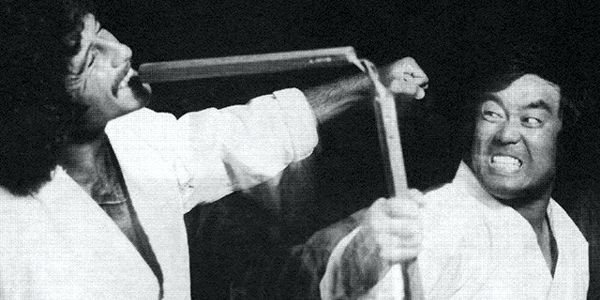
The knowledge about the nunchaku was spread across Japan thanks to the master of karate, Gichin Funakoshi (1868-1957), who created the shotokan style and who was born in the town of Shuri. This is where he came into contact with the nunchaku as a child.
In comparison to the Japanese nunchaku, the Chinese weapons are round, shorter and are approximately 30 cm long. Although both Chinese and Japanese nunchaku exist in various lengths, the Japanese are usually octogonal and approximately 40 cm long. Various martial arts masters would often accommodate the length of the sticks (the nunchaku) to their needs and affinities. The nunchaku (sticks) were connected with a rope or a thin chain. More recently, the nunchaku (sticks) are connected with a nylon rope or a thin, but strong chain which is around 20 cm long in China or around 10 cm long in Japan. However, since different masters would adapt the length of the rope or the chain to their own needs according to their figure or technique, that rule is not strict. The upper part of the nunchaku (stick) is called kontoh, the middle part is the chukon- bu, the lower part is named the kontei and the chain which connects them is known as the kusari. Shorter or a bit longer octagonal nunchaku are called hakaku kei, the round nunchaku are called maru gata, the three- part are known as san- setsu- kon, while the four- part are named yon –setsu- kon.
The basic technique of handling nunchaku is based on a centrifugal force which is made by swinging one handle. When swinging one handle, the speed of the other can go as fast as 160 km/h. Moving at such a great speed, the force of the stick is exceptionally great. The force at which the sticks hits can equal 800 kg, depending on the material of the nunchaku sticks as well as the speed by which the stick is moving. Besides hitting the opponent, there are other techniques including grasping with the nunchaku or choking with the weapon.
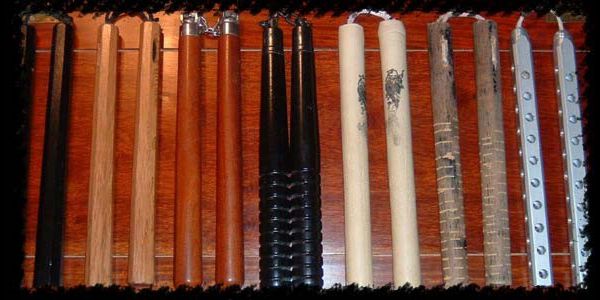
Today’s nunchaku are usually made out of harder wood such as oak or ebony and are linked with a nylon rope or a thin, but strong chain. The nunchaku can be made out of different materials such as metal, hard rubber, plastic or fiberglass. There are also so- called soft nunchaku which are very pliant because they are made out of rubber combined with a harder sponge and are used in training.
Although the nunchaku have been long known as a weapon, the karate master and the creator of the kobudo skill, Shinken Taira (1897- 1970), is especially acknowledged for the preservation of the traditional skill. He was a longtime president of the International Karate Kobudo Federation. In 1960 master Taira designed one of the first known nunchaku katas called maezato no nunchaku kata or, more commonly, Taira no nunchaku.
The nunchaku as a weapon didn’t gain much popularity across the world until the end of the 60’s and 70’s during the last century. The credit for the nunchaku’s popularity goes to martial arts masters, Dan Inosanto and Bruce Lee (1940- 1973). Master Inosanto was skilled at techniques using the tabak- toyok (chako), which is similar to the technique of the Chinese nunchaku. The skill of tabak- toyok (chako) uses a kind of nunchaku stick which is a bit shorter than the Chinese type, approximately 20 to 24 cm long. However, their rope is a bit longer, from approximately 26 to 30 cm long. Master Inosanto showed his friend Bruce Lee, the creator of the Jeet kune, his skill with the tabak- toyok and Master Lee was the first person who demonstrated the art of handling the nunchaku to the public. Bruce Lee began demonstrating his skill with the nunchaku at the end of 1966 and his skill was later shown in his movies which were widely distributed and became popular in the 1970’s. This helped the popularity of the nunchaku to reach massive proportions.
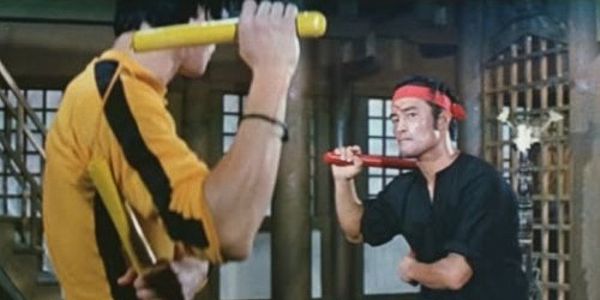
In 1974, the vast popularity of nunchaku, especially as young people copied their favorite actor and action star, Master Bruce Lee, caused many countries to ban carrying, using and selling nunchaku. This prohibition was valid in almost all countries in Europe, in Japan, in some states in the United States, in some parts of Australia as well as in other parts of the world. Carrying and using the nunchaku sticks in public places was, according to the law, equal to the usage of firearms. Although that law wasn’t abolished in any of those countries, it has been greatly lessened and mitigated since the beginning of the 1990’s.
Some strange and bizarre facts can also be linked to the history and popularity of the nunchaku. For example, since the mid 1970’s and the beginning of the 21st century, the biggest number of nunchaku were sold in Hong Kong. This wouldn’t be so strange, but we knew that wearing, showing, using and selling nunchaku in public in Hong Kong is strictly prohibited.
Two world renown organizations that promote the training of the nunchaku skill were founded in France even though France was the strictest country in Europe when it came to the transport and usage of the nunchaku. The state of California in the United States was the place where the famous American association for the promotion and training of the nunchaku was formed event though California was one of five states in America which had a stricter law. Needless to say, unless you were an instructor of martial arts, a certain prohibition for carrying, using and selling nunchaku existed. An almost identical situation happened in the Netherlands. Although the manufacturers, i.e. the sellers of nunchaku highlighted that the product wouldn’t be sold or delivered to countries where they were prohibited by law, it was often ignored. This is why the nunchaku could be procured across the globe for as little as ten dollars. An interesting fact says that China, which was a country where the use of various tools and weapons was forbidden and those who practice some martial arts was drastically punished (with long jail sentences), China never banned the use of the nunchaku.
Today, nunchaku skills are used in a large number of different styles of martial arts, for example in karate (nunchaku jutsu), kobudo (Okinawa kobudo), kung fu (erjie gun), tae kwon do (ssang jul bong, mouhe bong), hapkido, even in jiu jitsu (nunchaku jutsu) or aikido, as well as some skills such as eskrima (chako), i.e. tabak- toyok. The most surprising combination is that between the savate style (French boxing) and the nunchaku skill. There is also the so- called “freestyle“ as well as certain fitness exercises which are done using the nunchaku. Alongside performing kata and freestyle, competitions in fighting with the nunchaku, where contestants wear helmets and pads, are very popular today. Depending on the organizers of the competition, the fight lasts for two rounds, lasting for two or two and a half minutes. The winner is the contestant who inflicts more hits or the one whose opponent gives up the match. Some of the most well- known nunchaku organizations in the world are World Amateur Nunchaku Organization (France, 1987), Federation Internationale de Nunchaku de Combat et Artistique (France, 1992), International Techdo Nunchaku Association (Switzerland, 2000), World Nunchaku Association (Netherlands, 1997) and North American Nunchaku Association (California, 2003).
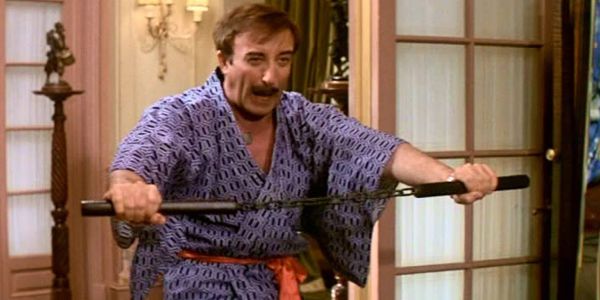
Numerous sportsmen who are not truly acquainted with the correct technique of handling the nunchaku believe that the skill is found in the speed of the spinning of the nunchaku around the body, but this is not true. Those who truly know the weapon agree with the conclusion of Master Ronnie Colwell’s (1934- 2015) article which states the “The nunchaku that is twirled around the body is a complete waste of time and energy“.
There are many famous masters who trained using the nunchaku and others who trained and competed with the weapon. Soome of these famous masters are karate masters Fumio Demura (Shito-ryu), Tadashi Yamashita (Shorin-ryu), Hiroshi Akamine (Shorin-ryu), Tetsuhiro Hokama (Goju-ryu), Hirokazu Kanazawa (Shotokan) as well as masters Jiro Shiroma, Ryusho Sakagami (1915- 1993) and kung fu masters Leung Ting, and Eric Lee. Also included are such masters such as Dan Ivan (1931- 2007), Ed Parker (1931- 1990), Bob McCormack, Marc Chaland, Andrew S. Linick, Ted Gambordella, Joe (Joseph) Hess and Hei Long.
Although today’s general opinion is that the golden age of the popularity of the nunchaku is over, that isn’t entirely true. Many beginners as well as competitors train with the nunchaku today. This is also true for many different martial arts enthusiasts (and masters) or various competitors or people who want to improve the dynamics and attractiveness of their movements.
The nunchaku were, and will remain, an infallible part of training in many varied martial arts styles.


